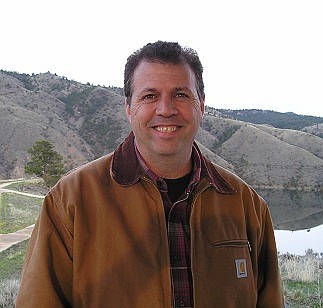COVID-19 News
May 19, 2022 at 1:45 p.m.
Wearable Device for Early Detection of COVID-19
University of Texas at Dallas bioengineers in collaboration with EnLiSense LLC now have come up with a wearable sensor that can detect two key biomarkers of infection in human sweat, a significant step toward making it possible for users to receive early warnings of infections such as COVID-19 and influenza.
The sweat sensor can identify the biomarkers interferon-gamma-inducible protein (IP-10) and tumor necrosis factor-related apoptosis-inducing ligand (TRAIL). Elevated levels of IP-10 and TRAIL indicate what is known as a cytokine storm, a surge of pro-inflammatory immune proteins generated in the most serious infections.
"Our work is pioneering since, until this date, it was unclear whether these molecules were present in sweat," said Dr. Shalini Prasad, who is the head of bioengineering at the University of Texas at Dallas. "We established that our low-volume passive sweat technology is indeed able to measure these biomarkers."
The ability to detect IP-10 and TRAIL is important because it allows diagnosticians to distinguish between viral and bacterial infections. "We have built a technology to unlock and explore the latest frontier in sweat diagnostics," said Dr. Prasad. This sweat-based, wearable technology is truly transformational in that it can measure and report human host response messenger molecules associated with inflammation and infection in a real-time and continuous manner, explained the researchers.
The sensor uses passive sweat, which means that the wearer does not need to engage in physical activity or have their sweat glands expressed to generate a sample. Real-time continuous monitoring is possible as sweat is collected on a removable strip, which must be changed daily.
In this study, the researchers collected sweat from 18 healthy adults who wore the sensor. They also drew blood from the subjects and compared the results. Researchers next plan to evaluate the sensor in clinical studies with patients experiencing respiratory infections.
Long COVID May Affect Select Patients
Long COVID may not affect as many people as previously thought. New research is suggesting that 30% of people treated for COVID-19 developed Post-Acute Sequelae of COVID-19 (PASC), commonly known as “Long COVID.” People with a history of hospitalization, diabetes, and higher body mass index (BMI) were most likely to develop the condition.
The study found older adults covered by Medicaid or undergoing an organ transplant were less likely to develop Long COVID compared to commercial health insurance. Surprisingly, ethnicity, older age, and socioeconomic status were not associated with the syndrome even though those characteristics have been linked with severe illness and greater risk of death from COVID-19.
Of the 309 people with long COVID studied, the most persistent symptoms were fatigue (31%) and shortness of breath (15%) in adults who had to be hospitalized due to COVID. Loss of the sense of smell (16%) was the most persistent symptom in adults with COVID, who did not require hospitalization.
The incidence and risk factors of Long COVID, and even how to define the syndrome, have remained unclear throughout the pandemic. The researchers sought to evaluate its association with demographics and clinical characteristics in order to devise the most effective treatments.
The researchers studied 1,038 people who were enrolled in the UCLA COVID Ambulatory Program between April 2020 and February 2021. Of those, 309 developed Long COVID. A person was determined to have the syndrome if they reported persistent symptoms on questionnaires 60 or 90 days after infection or hospitalization.
“This study illustrates the need to follow diverse patient populations longitudinally to understand the Long COVID disease trajectory and evaluate how individual factors such as pre-existing comorbidities, sociodemographic factors, vaccination status, and virus variant type affect type and persistence of Long COVID symptoms,” said Dr. Sun Yoo, health sciences assistant clinical professor at David Geffen School of Medicine at UCLA.
COVID-19 Vaccine Technique Leads to a Novel Way of Treating Heart Attacks
One or the rare positive things to come from the COVID-19 pandemic is a major advancement in vaccine research. Due to the COVID-19 vaccines, a method for delivering genetic material to the body is being tested as a way to repair damaged heart muscle after a heart attack.
The COVID-19 messenger RNA (mRNA) vaccines use lipid nanoparticles (tiny fat droplets) to deliver mRNA to the body's cells. This mRNA instructs the cells to manufacture a dummy spike protein on their surface to mimic the protein on the virus causing COVID-19. The body then mounts an immune response by creating antibodies which can be used if the individual becomes infected with the virus.
A similar method for mRNA delivery is now being used. In this case, instead of aiming for an immune response, the researchers' ultimate goal is to instruct the heart's cells to repair themselves after a heart attack. This preliminary study was conducted to determine whether mRNA could be successfully delivered to the heart muscle in lipid nanoparticles.
The researchers injected different formulations into the left ventricular wall in animal models during open chest surgery under general anesthesia. The researchers found that mRNA successfully reached the heart cells 24 hours after injection. However, despite injection into the heart, the highest levels of mRNA translation were found in cells of the liver and spleen.
"High expression was expected in the liver, since it metabolizes the lipid nanoparticles. Nonetheless, it was encouraging to see that there was mRNA translation in the heart tissue, which means that lipid nanoparticles could work as delivery systems for mRNA therapy,” said study author Dr. Clara Labonia with the University Medical Center Utrecht, the Netherlands.
John Schieszer is an award-winning national journalist and radio and podcast broadcaster of The Medical Minute. He can be reached at medicalminutes@gmail.com.





